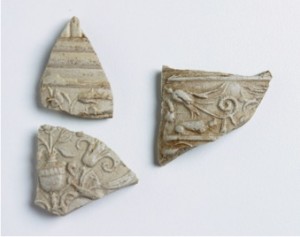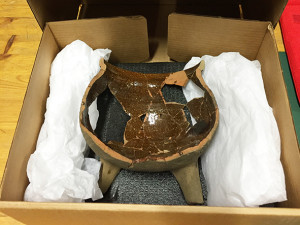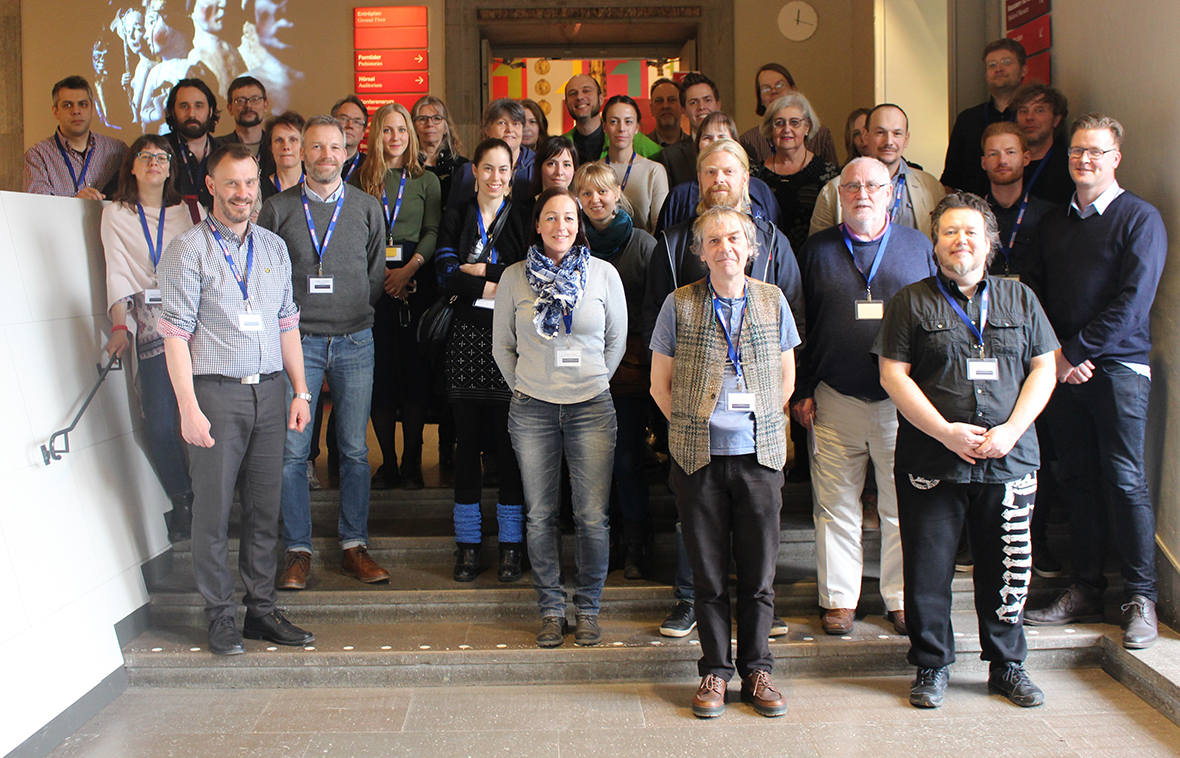Uncovering the North Atlantic trade sherd by sherd
Natascha Mehler, 12 April 2016
When it comes to the goods transported by merchants from Bremen and Hamburg to the North Atlantic islands we have only limited sources at hand. The few extant account books list the commodities they sold to the inhabitants of the islands in return for stockfish, fish oil, sulphur or woolen cloth. But the written sources are not precise but rather general and never tell where the exported goods were manufactured. To complicate matters, (archaeological) material culture of the German period is scarce. Most of the goods traded by the Germans were bulk material such as grain or flour, cloth, timber, and beer, and to a lesser extent every day items that were hard to get on the islands: horse shoes, tools, knifes, wax etc. Many of these goods, especially those of organic material, have long been gone. Ceramics, however, are a different matter. Icelanders did not produce ceramic vessels (and the Faroese and Shetlanders only to a limited extent) which means that all pots, pans, jugs and beakers needed to be imported. A considerable amount of pottery from the 15th to 17th centuries has been found in Iceland, Shetland and Faroe but what can pottery sherds tell us about that trade?

Fragments of a so called “Schnelle”, a tankard produced in Siegburg in the 16th century, found at Tórshavn, the German trading station in the Faroe islands (photograph by Helgi Michelsen).
The sherds that have survived from excavations and in museum collections in Iceland show characteristic traits of wares common in Northern Europe. The ceramic assemblages of sites such as Gautavík (a German trading site in the East), Viðey (a monastery near Reykjavík), or Stóraborg (a farm at the South coast) consist of two distinctive ware groups: stonewares and redwares. Stoneware was used to produce drinking vessels such as jugs and beakers. They were widely traded over Northern Europe, via the river Rhine and ports of Northern Germany and the Netherlands. For the trained eye, these stonewares are relatively easy to determine. The majority stems from the famous medieval and early modern production centres along the Rhine such as Siegburg, Frechen, or Cologne; a second group can be traced back to Lower Saxony.
The origin of redwares, a general term for cooking vessels (pots, pans) and plates consisting of earthenware, is far more problematic to identify. Vessel shapes and fabrics of pottery workshops are generally very similar over a large area and it is therefore hard to determine where exactly a certain redware pot was produced. Distinguishing the redwares is mostly based on typological characteristics such as a distinctive form of the rim of a pot, but the Icelandic archaeological material is often too fragmented to allow an identification beyond doubts. However, provenancing these redwares would considerably change our understanding of the trade mechanisms and pottery consumption patterns in the North Atlantic.

Fragmented redware tripod with internal lead glaze found at the trading site of Gautavík, Iceland. It dates to the late 16th century but the place of origin remains enigmatic (photograph by Natascha Mehler).
Luckily, there are other methods than typology to identify the provenance of pottery. In recent years, ICP analysis (inductively coupled plasma mass spectrometry), widely used in archaeological science, has proven to be a reliable method to determine the chemical fingerprint of the clays used for the production of ceramic vessels. ICP analysis has been applied successfully at a large number of redwares produced in Southern Scandinavia and Germany, with ground breaking work done by Torbjörn Brorsson (Kontoret för Keramiska Studier, Sweden) and Jette Linaa (Moesgaard Museum, Denmark). This means that we now have a solid base of reference material at hand which is necessary to securely identify the origin of the redwares in question. The application of the method in ceramic studies and an overview on the data reference material was presented in April 2016 at the inaugural meeting of the Baltic and North Atlantic Pottery Research Group (BNPG) which took place at the Historiska Museet Stockholm.
In summer 2016, redware fragments from selected sites in Iceland, Shetland and Faroe will be sampled in order to conduct ICP analysis. We will report on the results of the analysis, and what this means for the interpretation of the trading connections between Northern Germany and the North Atlantic islands.
Further reading:
Torbjörn Brorsson, A new method to determine the provenance of pottery – ICP analysis of pottery from Viking age settlements in Northern Europe. In: S. Kleingärtner, U. Müller, J. Scheschkewitz (eds.), Kulturwandel im Spannungsfeld von Tradition und Innovation. Festschrift for Michael Müller-Wille. Neumünster, 2013, 59-66.
Adolf Hofmeister, Das Schuldbuch eines Bremer Islandfahrers aus dem Jahre 1558. Bremisches Jahrbuch 80, 2001, 20-50.
Natascha Mehler, Die mittelalterliche Importkeramik Islands. Current Issues in Nordic Archaeology. Proceedings of the 21st Conference of Nordic Archaeologists, 6-9 September 2001, Akureyri, Iceland. Reykjavik 2004, 167-170.

Comments